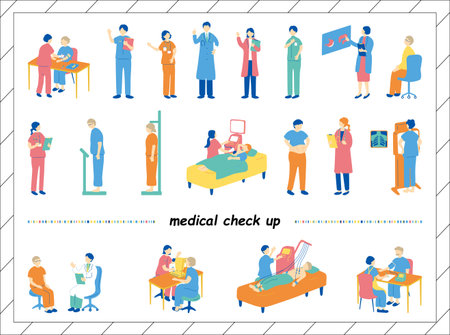1. Understanding the Health Insurance Marketplace
If you’re shopping for health insurance in the United States, getting comfortable with the Health Insurance Marketplace is your first step. Whether you’re an individual or part of a family, this system is designed to help you find coverage that fits your needs and budget. Here’s what you need to know to get started:
What Is the Health Insurance Marketplace?
The Health Insurance Marketplace, sometimes called “the Exchange,” is an online platform where you can compare and purchase health insurance plans. It was created under the Affordable Care Act (ACA) to make health coverage more accessible and affordable for everyone.
Key Terms You’ll See in the Marketplace
| Term | What It Means |
|---|---|
| Premium | The monthly amount you pay for your health insurance plan. |
| Deductible | The amount you pay out-of-pocket for covered healthcare before your insurance starts to pay. |
| Copayment (Copay) | A fixed amount you pay for a covered healthcare service, like a doctor visit. |
| Coinsurance | Your share of the costs of a covered service, usually shown as a percentage. |
| Network | The group of doctors, hospitals, and other providers your plan has agreements with. |
| Subsidy | Financial assistance that helps lower your monthly premiums or out-of-pocket costs based on your income. |
Enrollment Periods: Timing Matters
You can’t sign up for Marketplace insurance anytime—there are specific windows called enrollment periods. Missing these can mean waiting until next year unless you qualify for special circumstances.
| Enrollment Type | When You Can Enroll |
|---|---|
| Open Enrollment | Usually from November 1 through January 15 each year. |
| Special Enrollment Period (SEP) | If you experience certain life events—like losing other coverage, getting married, or having a baby—you may qualify to enroll outside the open enrollment window. |
Refusal Reminder:
If you miss Open Enrollment and don’t have a qualifying event for Special Enrollment, you could be left without coverage for the year. Always mark your calendar and gather necessary documents ahead of time!
How Does the Marketplace Help Individuals and Families?
- Comparison Shopping: Easily compare plans side by side based on cost, benefits, provider networks, and more.
- Financial Help: Depending on your household size and income, you may get subsidies to lower your costs.
- No Denial for Pre-existing Conditions: All Marketplace plans must cover pre-existing health issues and essential benefits.
- Cultural Relevance: Many states offer language support and culturally sensitive information so everyone can access care.
2. Qualifying for Marketplace Plans
Who Can Apply for Marketplace Health Insurance?
The Health Insurance Marketplace is designed to help people in the U.S. get affordable health coverage. But not everyone can sign up. To be eligible, you usually need to meet these basic requirements:
| Requirement | Details |
|---|---|
| Residency | You must live in the United States and have a home address. |
| Citizenship or Immigration Status | You must be a U.S. citizen, national, or lawfully present immigrant. |
| Not Incarcerated | You cannot be currently in jail or prison. |
What About Income?
Your household income matters when you apply. The Marketplace offers different levels of help based on how much money your family makes each year compared to the federal poverty level (FPL). This affects your eligibility for premium tax credits and cost-sharing reductions. If your income is too high, you can still buy a plan, but you might not qualify for extra savings.
Typical Income Limits for 2024 Enrollment (for Lower Costs)
| Household Size | Minimum Income* (Medicaid Expansion States) |
Maximum Income (for Savings) |
|---|---|---|
| 1 | $14,580 | $58,320 |
| 2 | $19,720 | $78,880 |
| 3 | $24,860 | $99,440 |
| 4 | $30,000 | $120,000 |
*If your income is below the minimum and your state expanded Medicaid, you may qualify for Medicaid instead of Marketplace plans. If your state didn’t expand Medicaid and your income is too low, you may not qualify for help—this “coverage gap” catches many by surprise, so double-check your states rules before applying.
What Documents Do You Need to Prove Eligibility?
The Marketplace will ask for some documents to make sure you qualify. Here’s what you should have ready:
- Proof of citizenship or immigration status: Like a U.S. passport, birth certificate, green card, or other immigration documents.
- Proof of income: Recent pay stubs, W-2 forms, tax returns, or Social Security statements.
- Proof of residency: Utility bills, lease agreements, or a driver’s license showing your current address.
- If applicable: Documents about your current insurance status or employer coverage offers.
A Real-World Example: Why Documentation Matters!
Susan applied for a Marketplace plan and estimated her income at $35,000. She forgot to upload her recent pay stub. Her application was put on hold until she provided it. If Susan had missed the deadline to submit proof, her coverage could have been canceled—or claims denied later if there was a question about her eligibility. Always keep copies of everything you submit!

3. Comparing Your Health Plan Options
Understanding the Metal Tiers: Bronze, Silver, Gold, and Platinum
The Health Insurance Marketplace offers plans in four main “metal” categories: Bronze, Silver, Gold, and Platinum. These tiers dont reflect the quality of care you receive but instead show how you and your plan split costs. Here’s a quick breakdown:
| Metal Tier | Monthly Premium | Out-of-Pocket Costs (Deductibles, Copays) | Best For |
|---|---|---|---|
| Bronze | Lowest | Highest | Healthy people who rarely need care and want low monthly payments |
| Silver | Moderate | Moderate | People who qualify for extra savings or want a balance between premium and out-of-pocket costs |
| Gold | High | Low | Those who expect to use their insurance often and prefer more costs covered upfront |
| Platinum | Highest | Lowest | People who need a lot of medical care and are willing to pay higher premiums for minimal out-of-pocket costs |
What Benefits Are Included?
No matter which metal tier you pick, all Marketplace plans cover the same set of essential health benefits by law—things like doctor visits, emergency services, maternity care, mental health support, prescription drugs, and preventive care. But watch out: not every plan covers every doctor or hospital, so always check the provider network before enrolling.
The Real Cost: Premiums, Deductibles, Copays & Coinsurance
Your real cost isn’t just your monthly premium. Here’s what else you should look at:
| Term | What It Means |
|---|---|
| Premium | The amount you pay every month for your health insurance. |
| Deductible | The amount you pay each year before your insurance starts paying its share. |
| Copay | A fixed amount you pay for a covered service (like $30 for a doctor visit). |
| Coinsurance | Your share of the costs after meeting your deductible (for example, 20% of a hospital bill). |
| Out-of-pocket maximum | The most youll have to pay for covered services in a year—after this, your plan pays 100%. |
Pitfall Alert: Don’t Focus Only on Monthly Premiums!
If you choose the lowest premium (like a Bronze plan), you might face big bills later if you need care. Always check the deductible and out-of-pocket maximum—those can sneak up on you! For example, if you visit the ER or need surgery, high deductibles can mean thousands in bills before coverage kicks in.
Avoid Common Mistakes When Comparing Plans:
- Check if your doctors and hospitals are in-network.
- Review what’s covered—and what isn’t.
- Add up all potential costs—not just the monthly payment.
- If you take prescriptions regularly, make sure they’re on the plan’s formulary.
- If you qualify for subsidies or cost-sharing reductions (especially with Silver plans), factor those into your decision.
- If you miss open enrollment or don’t update your info after major life changes (like moving or having a baby), your claims could be denied later!
The bottom line: Comparing health plans is about more than just price—it’s about finding protection that fits your family’s needs and budget. Take time to read the details so you don’t end up with unwanted surprises when you need care the most.
4. Finding Financial Assistance
Navigating the Health Insurance Marketplace can feel overwhelming, especially when it comes to finding a plan that fits your budget. The good news is there are several types of financial assistance available that can help lower your monthly health insurance costs. Let’s break down what’s out there and how you might qualify.
Subsidies: Premium Tax Credits
If you’re worried about high monthly premiums, premium tax credits could be your best friend. These are income-based discounts that lower your monthly payment for insurance purchased through the Marketplace. The less you earn, the more help you get. Here’s a simple example:
| Household Size | Annual Income Range for Subsidy (2024) | Potential Savings |
|---|---|---|
| 1 | $14,580 – $58,320 | Lower monthly premiums |
| 2 | $19,720 – $78,880 | Lower monthly premiums |
| 4 | $30,000 – $120,000 | Lower monthly premiums |
Keep in mind: If your income is below these ranges, you may qualify for Medicaid instead of Marketplace coverage.
Cost-Sharing Reductions (CSRs)
If you select a Silver plan and your household income falls within certain limits, you may also get cost-sharing reductions. CSRs help lower the amount you pay out-of-pocket for things like deductibles, copays, and coinsurance—meaning you’ll pay less when you go to the doctor or fill a prescription.
| Plan Type | Who Qualifies? | What’s Reduced? |
|---|---|---|
| Silver Plan with CSR | Income up to 250% of Federal Poverty Level | Deductibles, copayments, coinsurance |
| Other Plans | No CSRs available | N/A |
Important Tip:
You must choose a Silver plan to get CSRs—even if a Bronze plan seems cheaper up front, it might cost more in the long run if you need care.
How to Apply for Assistance?
The application process on HealthCare.gov will automatically check if you qualify for any subsidies or cost-sharing reductions based on the information you provide about your household size and income. Be sure to enter accurate details to avoid issues later—if your income changes during the year, report it right away so your assistance stays correct.
Heads Up: Avoid Surprise Bills!
If you don’t update your Marketplace info when your income changes, you could end up owing money back at tax time or missing out on savings. Double-check everything before submitting!
5. Avoiding Common Pitfalls and Coverage Denials
Stay Ahead of Claim Denials with Smart Moves
Choosing a health plan on the Health Insurance Marketplace can feel overwhelming, especially when it comes to making sure you don’t lose coverage or face claim denials. Here are some practical tips to help you steer clear of common mistakes that could cost you money or leave you uninsured.
Watch Out for Missed Deadlines
One of the most common reasons people end up without coverage is missing important deadlines. Marketplace open enrollment periods don’t last all year, so mark your calendar! If you miss this window, you might only qualify for coverage if you have a qualifying life event, like getting married or having a baby.
| Deadline Type | Typical Date Range (2024 Example) | What Happens If You Miss It? |
|---|---|---|
| Open Enrollment | Nov 1 – Jan 15 | No new plan until next year unless special event occurs |
| Special Enrollment Period | 60 days after life event | No coverage until next open enrollment |
| Premium Payment Due Date | Monthly (varies by insurer) | Your plan may be canceled for non-payment |
Double-Check Your Information
Mistakes on your application—like wrong Social Security numbers, income estimates, or household details—can trigger coverage delays or denials. Always review every section before submitting. Use official documents to confirm accuracy.
Understand What’s Covered (and What’s Not)
A lot of claims are denied simply because the service isn’t covered by your plan. Before scheduling medical care, check your policy’s Summary of Benefits and Coverage (SBC). If in doubt, call your insurer to confirm if the service is included and whether prior authorization is needed.
Keep an Eye on In-Network Providers
Visiting doctors or hospitals outside your plan’s network is a common reason for denied claims or higher bills. Always use the provider directory from your insurance company website—or call ahead—to make sure your doctor is in-network.
Quick Reference: In-Network vs. Out-of-Network
| In-Network | Out-of-Network | |
|---|---|---|
| Covered Services? | Usually yes, at lower cost | Often limited or not covered; higher costs apply |
| Claim Denial Risk? | Low if pre-authorized | High; many plans deny out-of-network claims entirely unless emergency |
Don’t Forget Required Paperwork & Authorizations
Certain procedures require pre-approval from your insurance company. If you skip this step, your claim could be denied—even for necessary care. When in doubt, ask your provider’s office if pre-authorization is needed before moving forward.
If You Get a Denial Letter—Act Fast!
If you do receive a denial letter, read it carefully and respond quickly—there are strict appeal deadlines. Gather supporting documents and follow the instructions provided for appeals.
Avoid Surprises with Good Habits:
- Set reminders for deadlines and payments.
- Save all communications with your insurer.
- Ask questions before agreeing to medical tests or treatments.
- Update the Marketplace right away if your income or family size changes.
A little preparation goes a long way toward keeping your health insurance working smoothly—and avoiding those dreaded denial letters in the mail!
6. Next Steps After Enrollment
Double-Check Your Coverage Details
After you enroll in a health insurance plan through the Marketplace, your first move should be to confirm your coverage. Here’s how you can make sure everything is set up correctly:
- Look for a Confirmation Email or Letter: Most plans send an email or mail confirmation right after enrollment. If you don’t get one within a week, log into your Marketplace account and check your status.
- Review Your Plan Documents: Make sure your information (like your address, family members, and income) is correct. If you spot mistakes, contact the Marketplace or your insurance company immediately—errors can lead to claim denials later on.
- Pay Your First Premium: Coverage typically doesn’t start until you pay the first bill. Don’t assume you’re covered until payment is made and processed.
Start Using Your Insurance
Your insurance card should arrive in the mail within a few weeks. If you need care before then, most insurers offer digital cards or temporary proof of coverage online. Here are some practical steps to get started:
| What To Do | Why It Matters |
|---|---|
| Find In-Network Providers | Using doctors and clinics in your network means lower out-of-pocket costs and fewer denied claims. |
| Schedule Preventive Care | Many plans cover annual check-ups, vaccines, and screenings at no cost to you. |
| Understand Your Benefits | Know what services require pre-approval and which ones have deductibles or copays. |
| Create an Online Account with Your Insurer | You can track claims, view benefits, and download your insurance card anytime. |
Tip: Keep All Documentation Handy!
If there’s ever a billing issue or claim denial, having your paperwork ready can save time and headaches.
Know When You Can Make Changes
You can only switch or update plans at certain times unless you qualify for a Special Enrollment Period (SEP). Here’s what counts as a SEP trigger:
- Losing Other Health Coverage: This includes losing a job-based plan or aging off a parent’s policy at 26.
- Life Events: Getting married, having a baby, adopting a child, or moving to a new state usually allows you to change plans.
- Error Corrections: Mistakes on your application that affect eligibility may also let you update your plan outside Open Enrollment.
Avoid Common Pitfalls!
If you miss premium payments, even by accident, you could lose coverage—and getting it back might mean waiting until the next Open Enrollment period. Always read any letters from your insurer carefully; they often contain important deadlines or requests for additional documents that could impact whether claims are paid out in the future.

